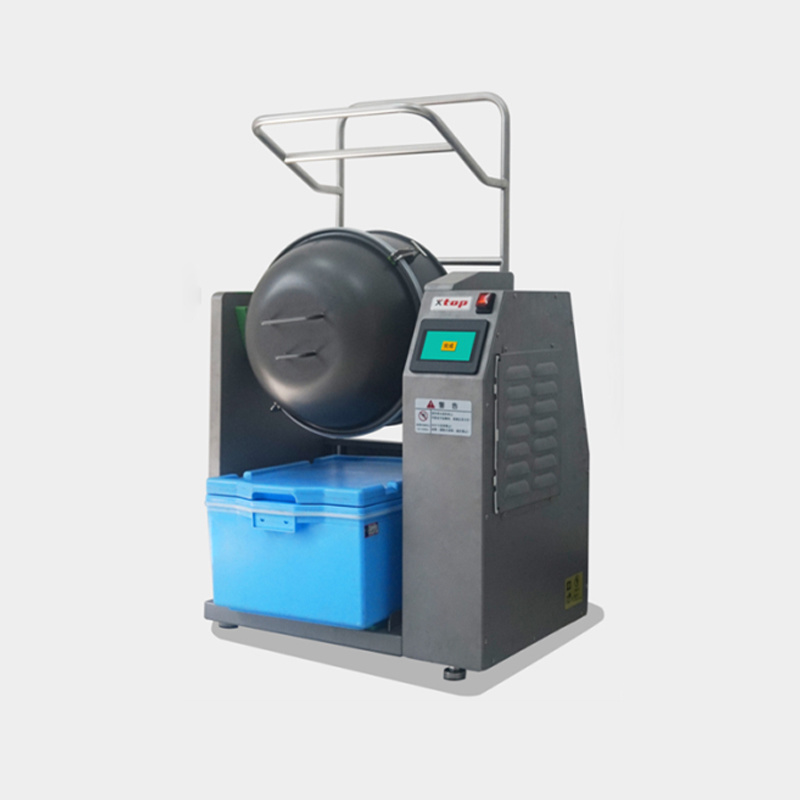Exploring the Advanced Technology Behind Automatic Sushi Rice Maki Production
Release Time:2025-10-15
Exploring the Advanced Technology Behind Automatic Sushi Rice Maki Production
Introduction to Automatic Sushi Rice Maki Production
The sushi-making process has undergone a significant transformation in recent years, thanks to advancements in technology. Automatic sushi rice maki production harnesses state-of-the-art machinery to produce sushi with unparalleled speed and consistency. This article delves into the technology behind these machines, the benefits they offer to food manufacturers, and the future of sushi production.
The Importance of Sushi in Global Cuisine
Sushi is not just a traditional Japanese dish; it has become a staple in global cuisine. The increasing demand for sushi has led to the need for efficient production methods that can meet consumer expectations for quality and taste. Understanding the role of technology in this process is vital for anyone in the food processing industry.
Understanding Sushi Rice and Its Unique Properties
To produce high-quality sushi, the type of rice used is crucial. Sushi rice, or *shari*, has specific properties that make it distinct:
- **Short Grain**: Sushi rice is typically short-grain, which has a higher starch content, allowing it to stick together when cooked.
- **Seasoning**: After cooking, the rice is flavored with a mixture of vinegar, sugar, and salt, contributing to the unique flavor of sushi.
- **Texture**: Properly cooked sushi rice should be firm yet sticky, which can be challenging to achieve manually.
The Challenges of Manual Sushi Production
Manual sushi production involves numerous steps that require skill and precision. The challenges include:
- **Time-Consuming**: Preparing sushi rice and assembling rolls can be labor-intensive.
- **Consistency**: Achieving the same taste and texture in each batch can be difficult without automated systems.
- **Labor Intensive**: Training staff to produce sushi efficiently can be costly and time-consuming.
The Role of Automation in Sushi Production
Automation has emerged as a solution to many of the challenges faced in traditional sushi production. By incorporating advanced technology, manufacturers can improve efficiency, reduce labor costs, and maintain consistent quality.
Key Technologies in Automatic Sushi Rice Maki Production
Several technologies are integral to the automatic production of sushi rice maki:
1. **Rice Cookers**: Advanced rice cookers equipped with sensors ensure that sushi rice is cooked to perfection every time.
2. **Rice Seasoning Machines**: These machines mix vinegar, sugar, and salt with cooked rice uniformly, guaranteeing consistent flavor.
3. **Rolling Machines**: Automated rolling machines precisely assemble the sushi rolls, ensuring uniformity in size and shape.
4. **Slicing Machines**: High-precision slicing machines cut the completed sushi rolls into uniform pieces, enhancing presentation and portion control.
Advantages of Using Automatic Sushi Rice Maki Production Technology
The benefits of adopting automatic sushi rice maki production technology include:
- **Increased Efficiency**: Automation significantly reduces production time, allowing manufacturers to meet high demand.
- **Consistency and Quality**: Machines provide uniform results, ensuring that each sushi roll meets quality standards.
- **Cost-Effectiveness**: Reduced labor costs and improved production efficiency contribute to overall cost savings.
- **Scalability**: Automated systems can be easily scaled up or down to meet changing market demands.
Insights into the Production Process
The automatic production of sushi rice maki involves several key stages:
1. Rice Preparation and Cooking
The process begins with carefully selecting and washing the rice. Once cleaned, the rice is cooked using specialized rice cookers that monitor temperature and moisture levels to produce perfect sushi rice.
2. Seasoning the Rice
After cooking, the rice is transferred to a seasoning machine. Here, the rice is mixed with a pre-measured blend of vinegar, sugar, and salt. This step is crucial for flavoring the rice, ensuring an authentic sushi taste.
3. Rolling and Assembling
Once seasoned, the rice is evenly spread onto a sheet of nori (seaweed) by an automated rolling machine. Fillings, such as fish and vegetables, are added before the machine rolls the sushi tightly. This step guarantees uniformity in size and shape, crucial for presentation.
4. Cutting and Packaging
After rolling, the sushi log is cut into equal pieces using slicing machines. The pieces are then packaged for distribution, ensuring freshness and quality upon reaching consumers.
Future Trends in Sushi Production Technology
As technology continues to evolve, so too does the sushi production process. Several trends are shaping the future of automatic sushi rice maki production:
1. Integration of AI and Machine Learning
Artificial intelligence and machine learning are being integrated into production systems to improve quality control. These technologies can analyze data from previous batches to optimize cooking times and seasoning processes.
2. Sustainability Practices
With an increasing focus on sustainability, manufacturers are exploring eco-friendly materials for packaging and sourcing ingredients responsibly. Automation can also contribute to reducing food waste by optimizing production processes.
3. Customization Options
As consumer preferences grow more diverse, manufacturers are looking toward automation systems that allow for customization. This capability can cater to different dietary needs, such as vegetarian or gluten-free options.
FAQs About Automatic Sushi Rice Maki Production
1. How does automatic sushi rice production work?
Automatic sushi rice production utilizes advanced machinery to cook, season, roll, cut, and package sushi rice maki with high efficiency and consistency.
2. What are the benefits of using automated machinery for sushi production?
The main benefits of automated sushi production include increased efficiency, consistency in quality, reduced labor costs, and the ability to scale production easily.
3. Can automated systems cater to different types of sushi?
Yes, many automated systems can be customized to accommodate various sushi types, including traditional rolls, hand rolls, and fusion sushi.
4. What types of machines are used in automatic sushi production?
Key machines include rice cookers, seasoning machines, rolling machines, and slicing machines, all designed for specific stages of sushi production.
5. Will automation replace human workers in the sushi industry?
While automation can reduce the need for manual labor, skilled workers will still be necessary for quality control, maintenance, and overseeing production.
Conclusion
The evolution of automatic sushi rice maki production technology represents a significant advancement in the food processing industry. By integrating automation into sushi production, manufacturers can enhance efficiency, maintain consistent quality, and meet the growing global demand for sushi. As technology continues to develop, we can expect even more innovations that will shape the future of sushi making, ensuring that this beloved dish remains accessible and delicious for generations to come.
Keywords:Automatic Sushi Rice Maki
CATEGORY
Related News
2024-02-03











